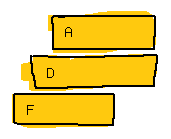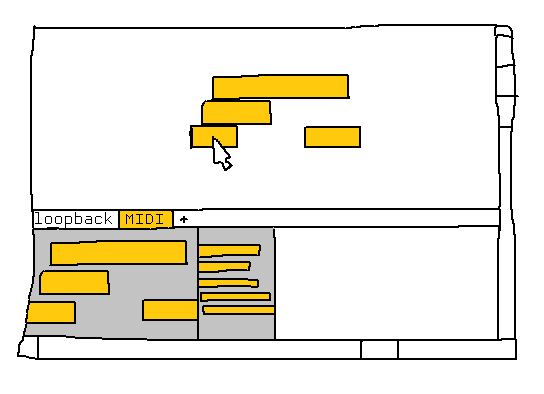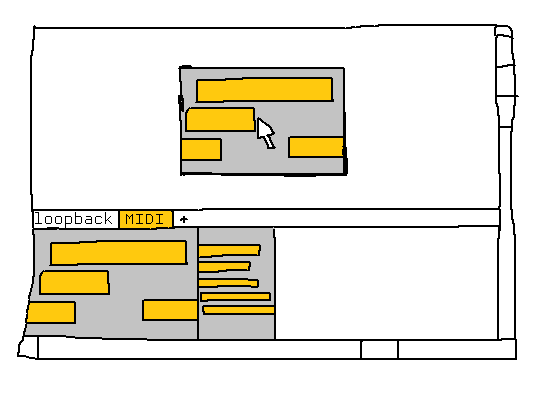DevLog #74 How is MIDI input going to work? (Patreon)
Content
I have been asked several times about this in the last few weeks and coincidentally it is one of the things I am going to be looking at soon now that Macro blocks are working, so I have been thinking about it recently and had a funny idea. Ultimately I think there will be many different ways of getting chords and phrases from your fingertips onto the workspace so this is just one idea of many.
There is going to be some way of creating instruments in blockhead which you can play via MIDI note input. I'm skipping over the details of that system for this post, partly because I still have a lot of stuff to figure out there.
Blockhead is influenced a little bit by a DAW called Renoise. In Renoise you can record MIDI note on/off events into a track by selecting it and just playing MIDI notes. If the song is playing back while you do this then the events will be inserted in the right places.
In Renoise (and Blockhead) there's no piano roll. Instead every track is sort of its own piano roll, except not really, because the MIDI events aren't positioned on the screen based on which note they are. i.e. in a classical piano roll interface a chord D/F/A is represented something like this:

In Renoise if you play a chord of three notes into a track, it just places those notes in the existing lanes, automatically inserting new lanes to make room if it needs to. So you might end up with something like this:

Note that the events are not ordered chromatically. The F was played first so it ended up on the first lane. The D was played while the F was still held down so another lane was added and the D was placed there, then the same for the A.
If the notes don't overlap (e.g. an arpeggio rather than a chord), they'll just be placed on the same lane something like this:

(Of course Renoise is a tracker interface so all this is rotated 90 degrees, and everything's represented using ASCII instead of rectangles.)
If you have used tracker-based DAWs before then you are probably familiar with this way of representing things and so you know it's all okay. If you haven't then you might be wincing a bit.
I won't try too hard to convince you of anything but I'll just say that if you use a tracker for long enough you might find that you don't miss the piano roll as much as you thought you would. The main advantage of the piano roll interface, I suppose, is that it can give you an immediate visual representation of a chord or melody, which in my experience is not important at all (i just use my ears instead), but maybe it also depends on what kind of music you make.
Anyway I am planning to do something pretty similar to this in Blockhead. But this is only for inserting MIDI notes directly into a track and I was thinking about ways that we could just sketch out MIDI phrases and ideas to some kind of buffer which could then be dragged onto the workspace afterwards.
Hey Blockhead already has an input recording buffer, so we could actually just extend it. What about this:

In addition to audio buffers you can also add MIDI buffers to the input panel. You can start/stop recording MIDI phrases using the selected instrument (it is to be decided what exactly an "instrument" is in Blockhead). The MIDI phrases are placed in the buffer and you can click on them to convert them to placeable blocks:

And we have Macro blocks now so you should also be able to create a Macro from a phrase:

What exactly are these MIDI events? Not MIDI events at all because Blockhead isn't based on MIDI like other DAWs. MIDI is a way of inputting things. So these yellow blocks are just normal Blockhead blocks (the types and parameters of which are generated from the instrument that was being played.)

The D/F/A chord example from earlier might end up with a block phrase spanning 3 lanes like this (the actual pitch offsets would depend on the root octave).
Once these blocks are on the workspace they just act like regular blocks. I think there would need to be more options to continue manipulating workspace blocks using MIDI though, so there is still a lot more to figure out. But I think this is an interesting start.